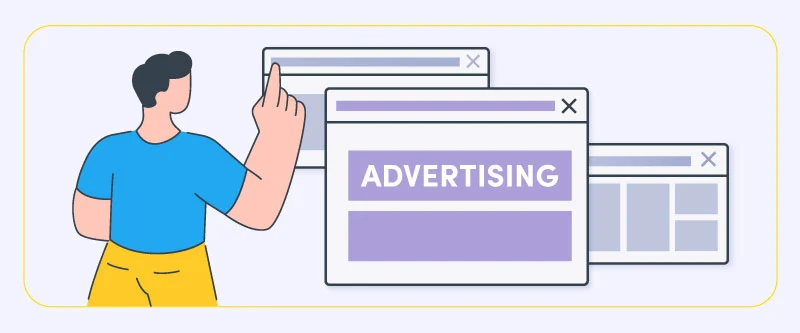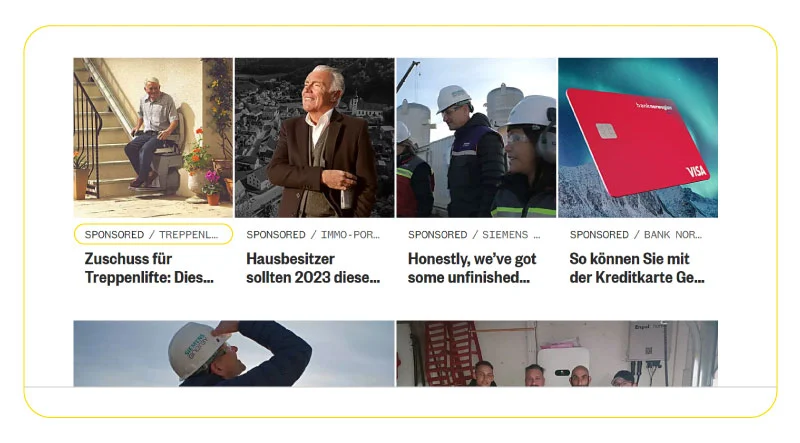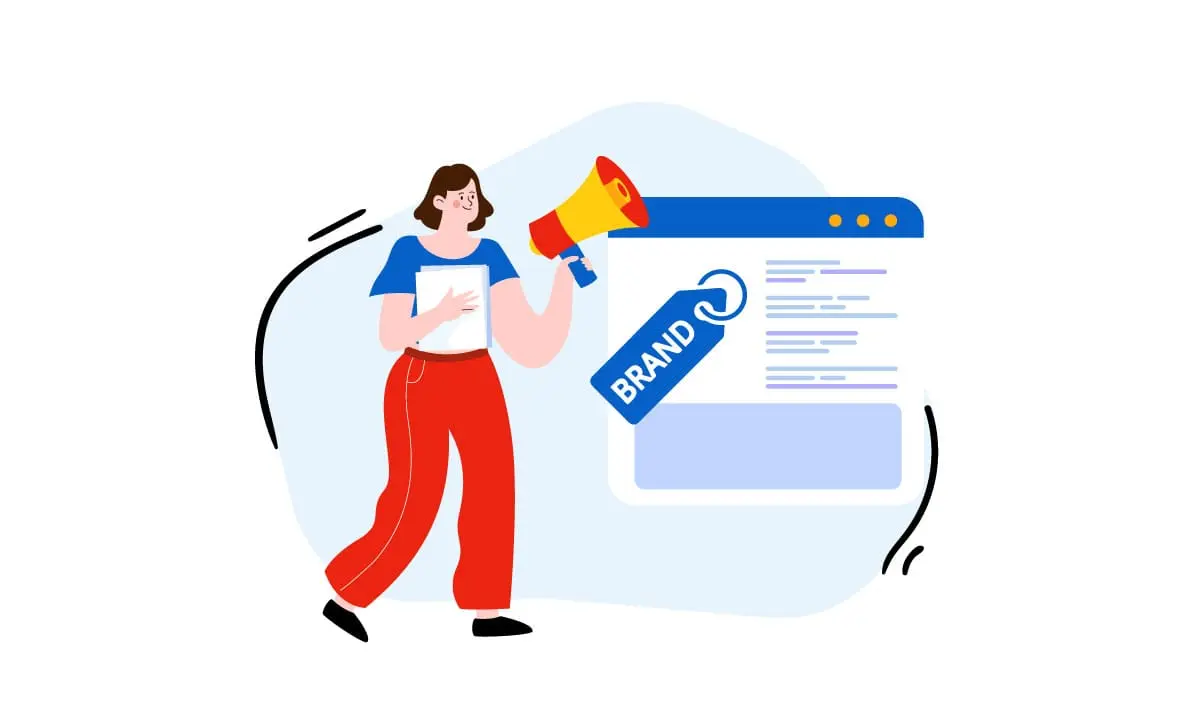As an internet user, you’ve likely experienced the annoyance of pop-up ads, banners, and videos that disrupt your browsing. Ad blockers provide a solution, allowing for a cleaner and faster online experience by blocking these ads. However, while ad blockers may feel like a blessing for users, they pose significant challenges for advertisers and publishers.

Enter native advertising, a type of advertising that blends seamlessly with the content users are already consuming. But can native advertising survive in the age of ad blockers? What is the impact of ad blockers on native advertising in general? In this article, we’ll explore the impact of ad blockers on native advertising and what advertisers can do to adapt to the changing landscape.
What is native advertising?
Native advertising is like the chameleon of online advertising – it blends in so well with the surrounding content that you might not even realize it’s an ad. Unlike traditional banner ads or pop-ups, native ads are designed to match the look and feel of the platform they’re on. For example, if you’re scrolling through your Facebook newsfeed, you might see an article or video from a brand that looks like it could have been posted by one of your friends.

Or, if you’re reading an online magazine, you might come across an article that’s labeled “Sponsored Content” and fits seamlessly with the publication’s editorial style. Native ads are intended to be less disruptive and more engaging than traditional ads, which makes them a popular choice for advertisers looking to connect with consumers in a more organic way. But can native advertising overcome the challenge of ad blockers and continue to thrive? Let’s find out.
The troublesome emergence of ad blockers
If you’re one of the millions of internet users who have installed an ad blocker, you’re not alone. Ad blockers have become increasingly popular in recent years as people have grown tired of intrusive and annoying ads. Ad blockers work by filtering out ads on a webpage, so you don’t see them. They can be installed as browser extensions, mobile apps, or even built into web browsers.
In fact, some browsers like Brave and Firefox come with ad blockers already built-in. Ad blockers not only improve the user experience by making websites load faster and eliminating annoying ads, but they also reduce the risk of malware and other security threats that can come from malicious ads. However, while ad blockers may be great for users, they’re causing headaches for advertisers who rely on ads to reach their target audience. Let’s take a closer look at the impact of ad blockers on native advertising.

As you might expect, ad blockers have had a significant impact on the world of online advertising, including native advertising. According to a recent study by eMarketer, 40% of internet users in the United States are using ad blockers, which means that nearly one in three people are not seeing ads online. This presents a big challenge for advertisers who rely on ads to generate revenue and reach their target audience.
Native advertising is no exception – while it’s designed to be less intrusive and more engaging than traditional ads, ad blockers can still block native ads if they’re not integrated properly. Additionally, some users may feel deceived if they realize that content they thought was organic was actually sponsored. However, there are ways that advertisers can adapt to the rise of ad blockers and continue to use native advertising effectively. Let’s explore some strategies.
Overcoming ad blockers with native advertising
Despite the challenges posed by ad blockers, there are several strategies that advertisers can use to overcome them and continue to use native advertising effectively.
One approach is to focus on creating high-quality, engaging content that users will want to consume, regardless of whether it’s labeled as sponsored or not. By creating content that’s valuable, informative, or entertaining, advertisers can build trust and credibility with their audience. This can lead to more engagement and fewer ad blocker installs since users are more likely to view this type of content as a positive addition to their browsing experience rather than an interruption.

For example, Netflix used native advertising in its promotion of the show “Narcos” by creating a series of articles that delved into the true stories behind the series. These articles were published on sites like The New York Times and The Atlantic and were so well-received that readers shared them widely on social media, generating even more exposure for the show. By focusing on creating compelling content that added value for readers, Netflix was able to generate buzz and build anticipation for the show without relying on traditional advertising methods.
Another strategy is to use “programmatic native advertising.” Programmatic native advertising involves using automated systems to match ads with relevant content in real time. This can help advertisers reach the right audience at the right time, without being blocked by ad blockers. Programmatic native advertising allows advertisers to target their ads based on a user’s interests, behavior, and demographics, making it more likely that the user will engage with the ad. Additionally, programmatic advertising can be more cost-effective and efficient than traditional advertising methods since it allows for real-time optimization and targeting.

Finally, some publishers are experimenting with ways to detect and bypass ad blockers, either by asking users to turn off their ad blockers or by using technology that can bypass ad blockers altogether. For example, Forbes implemented a system that detects when a user is using an ad blocker and then prompts the user to disable it or pay for an ad-free experience. While this approach has received some criticism from users who feel that it’s intrusive or unfair, it has also been successful in reducing ad blocker usage and increasing revenue for the publisher.
While these strategies may not be foolproof, they can help advertisers navigate the changing landscape of online advertising and continue to use native advertising effectively. By focusing on creating high-quality, engaging content, using programmatic native advertising, and experimenting with new approaches to bypassing ad blockers, advertisers can adapt to the rise of ad blockers and continue to reach their target audience
Conclusion
Ad blockers have certainly had an impact on the world of online advertising, including native advertising. However, advertisers can overcome these challenges by focusing on creating high-quality, engaging content, using programmatic native advertising, and experimenting with new approaches to bypass ad blockers.
By doing so, they can continue to reach their target audience and generate revenue while also delivering content that adds value to users’ browsing experiences. While ad blockers may be a challenge, they also present an opportunity for advertisers to think creatively and develop new strategies for connecting with their audience. As the world of online advertising continues to evolve, it’s essential that advertisers stay ahead of the curve and adapt to the changing landscape. By doing so, they can continue to use native advertising effectively and reach their target audience in meaningful and impactful ways.
FAQs
How do adblockers work?
Adblockers are software tools that prevent advertisements from displaying on web pages, either by removing them entirely or replacing them with blank spaces.
Are adblockers legal?
Yes, adblockers are legal. However, some publishers and advertisers have criticized them for limiting their ability to reach their target audience and generate revenue.
Can advertisers still use native advertising if users have adblockers installed?
Yes, advertisers can still use native advertising if users have adblockers installed. By creating high-quality, engaging content, using programmatic native advertising, and experimenting with new approaches to bypassing adblockers, advertisers can continue to reach their target audience and generate revenue.







 Facebook Ads Spy Tool
Facebook Ads Spy Tool TikTok Ads Spy Tool
TikTok Ads Spy Tool